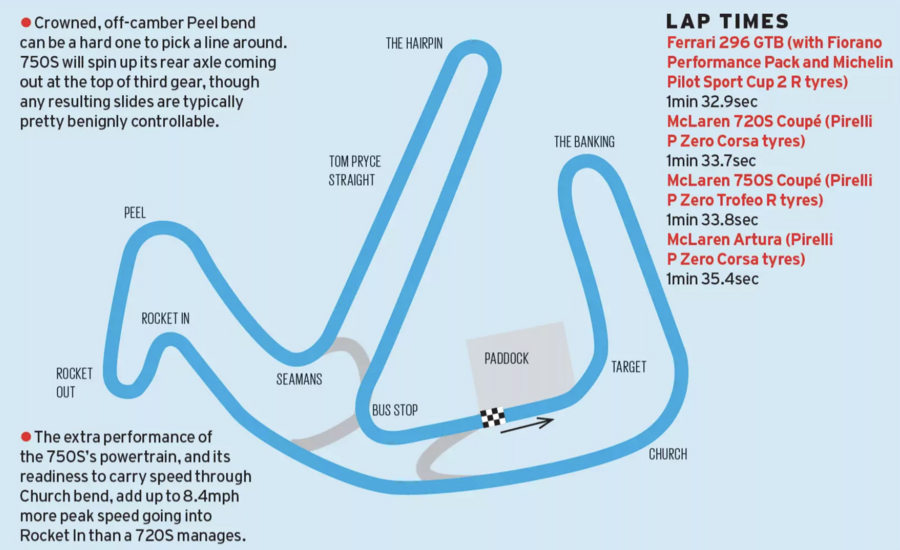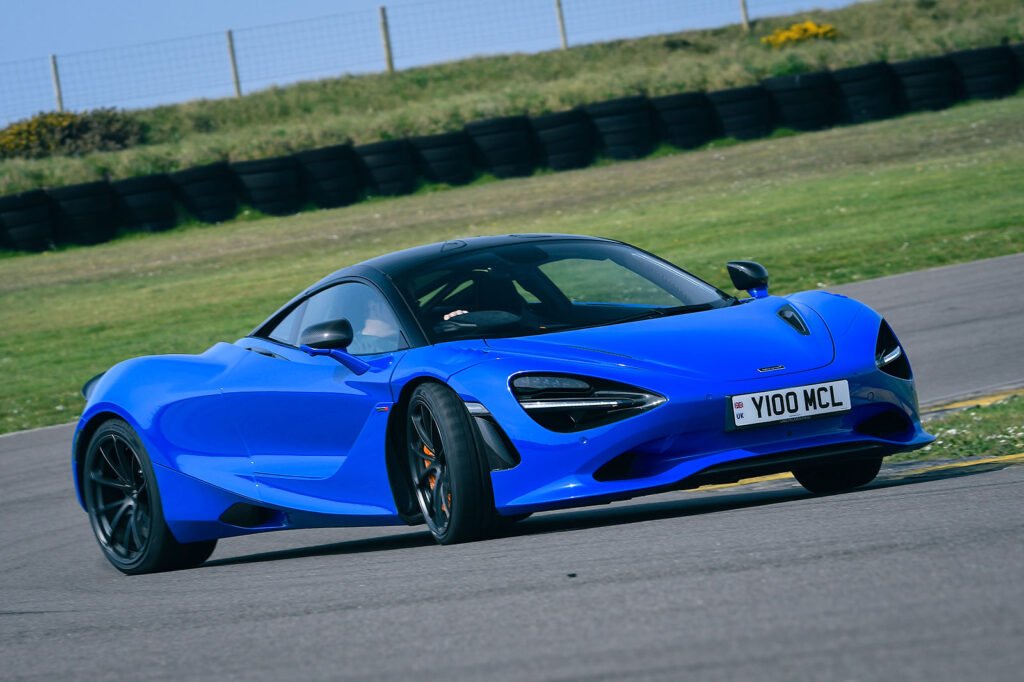Here we are again, debating the appeal of McLaren’s Ricardo-built turbocharged V8 engine, in an application where the company claims to have spent considerable time tuning the harmonics. Certain key frequencies have been boosted, not least by the 750S’s new stainless steel exhaust.
The result is certainly loud – perhaps sharper and more detailed in places than it was, but still a bit grunty, coarse and machine-like. Subjectively, it’s not a joy to the ear, and perhaps it’s time for everyone to accept that it never will be.
And yet the performance boost it delivers is a beautiful sequence of hurricane-like mid-range boost followed by a high-rpm growl. It’s hard to imagine both being produced by the same engine.
McLaren clearly isn’t afraid of a bit of non-linearity and ‘beast’ in the 750S’s power delivery. At full power, the M840T V8 retains that recognizable big-bore turbo feel as it swings feverishly between 2,500 and 5,000 rpm, giving you the feeling of being hurled from a slingshot.
It looks like the engine is finally catching up to itself from 5500 rpm. From peak torque, torque decreases gradually, but pedal precision and response increase as the revs drop to a redline of 8100 rpm.
The 750S’s shorter gearing and more powerful engine give it a wilder character than the 720S, there’s no doubt about that – but how much faster are they against the clock?
There’s no denying how quick the new car feels, but on a perfectly dry day at Millbrook and on Pirelli Corsa tyres (the optional Trofeo Rs would have made a difference here) the improvement was visible – if small. In stark terms, acceleration from a standstill to 100mph was 0.2sec quicker, over a quarter of a second from standstill by 0.1sec, and again by just a tenth to 160mph.
Thanks to the electrically boosted reserves, a Ferrari 296 GTB is even faster (0-161 km/h in 5.1 seconds, albeit on the sticky homologated rubber).
Leaving aside the objective standards, there is a lot to like about this engine and gearbox. McLaren now offers a second launch control mode, in addition to the more serious, optimally fast mode, which combines a more expressive drama and controlled wheelspin into the car’s drive character.
And then there are the incredibly positive gear changes of the ‘SSG’ transmission to marvel at, and the exceptionally powerful brakes (113-0 km/h in just 39.4 m, better than the 720S, but still no 296 GTB with Michelin Cup 2 R tires).
Track Notes (Anglesey Circuit, International)

There’s no denying the 750S is absolutely powerful, capable of carrying speed down the Anglesey straights; into braking zones, leaning on that massive braking power; and then, in turn, towards the apexes.
Good handling balance and reassuring steady-state cornering stability make this a supercar that can handle plenty of roll-on cornering speed, the kind that tests your courage to take it through the heart of a corner. If you can find the courage, you can find a lot of lap time that way.
The 750S’s shorter gearing and greater torque mean it can struggle to get out of tighter corners under power unless you short-shift, making its handling a little shabbier than the 720S. You run the risk of losing time by engaging the traction control, or spinning the rear wheels.
It’s a very easy car to overdo in corners like this. This ultimately made the car a tenth slower than the 720S around Anglesey, even on Trofeo R tyres.

